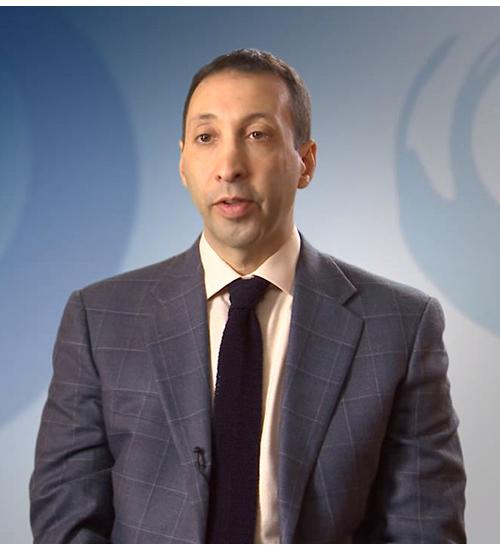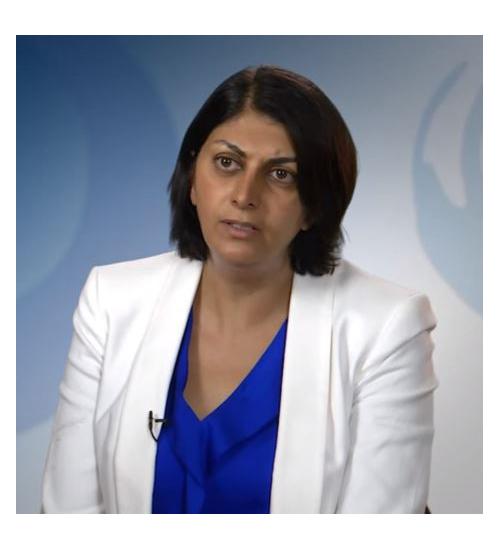Stem cell transplant may be considered for advanced or refractory cutaneous lymphoma, or cutaneous lymphoma that comes back after treatment and numerous other treatments have been tried. A stem cell is a type of hematopoietic (blood-forming) cell that can come from bone marrow, circulating blood or umbilical cord blood donated by a new mother. For a stem cell transplant, patients are first given high doses of chemotherapy or radiation, which kills their existing stem cells. The patient is then given replacement with their own healthy stem cells stored prior to treatment (autologous stem cell transplantation) or those from a donor (allogeneic stem cell transplantation). Of these 2 types of transplants, allogeneic stem cell transplantation is the only procedure used for patients with CTCL. These stems cells will form new, healthy white blood cells.
The ability to transplant stem cells allows physicians to use higher doses of chemotherapy to treat the cancer than the patient could normally tolerate, and also moves new immune cells that can help fight the cancer. Stem cell transplantations are serious treatments that should not be taken lightly or considered early in a patient’s disease journey and may not be suitable for all patients.
EXPERT PRESENTERS
Steven Horwitz, MD, Medical Oncologist, Memorial-Sloan Kettering Cancer Center
Lauren Pinter-Brown, MD, FACP, Professor, Department of Medicine, Division of Hematology/Oncology, UC Irvine Medical Center (At time of publication: UCLA Medical Center)
Because patients with adverse health conditions and/or those with more advanced age are at higher risk when their bone marrow is destroyed, they may be candidates for reduced-intensity transplantation (also called non-myeloablative or mini-allogeneic stem cell transplantation).
During this procedure, reduced-intensity treatment kills some of the cancer cells and some of the bone marrow, suppressing the immune system just enough to allow the donor’s stem cells to be taken up. The cells from both the donor and the patient exist together in the patient’s body. Slowly, the donor’s cells take over the patient’s bone marrow. These new donor cells may be capable of responding to the cutaneous lymphoma by helping the patient’s immune system kill the cancer cells.
This is a less intense approach than full stem cell transplantation. This approach is being investigated more thoroughly and may become adopted by more physicians for the treatment of a broader range of patients if it proves to be sufficiently effective in healthier patients.
EXPERT PRESENTERS
Jasmine Zain, MD, Director, T-cell Lymphoma Program, City of Hope Comprehensive Cancer Center
Lauren Pinter-Brown, MD, FACP, Professor, Department of Medicine, Division of Hematology/Oncology, UC Irvine Medical Center (At time of Production: Clinical Professor of Medicine, Geffin School of Medicine at UCLA)
The high-dose chemotherapy used prior to stem cell transplantation destroys not only cancer cells, but also healthy bone marrow needed to maintain a patient’s blood cells. After high-dose chemotherapy, which is sometimes given with radiation, blood cell counts are very low, which increases a patient’s risk of infection and bleeding. In addition, because chemotherapy doses are higher, side effects from the chemotherapy may be more intense. Patients with adverse health conditions or those who are more advanced in age may be at higher risk while undergoing this procedure.
With allogeneic stem cell transplantation, there is a risk of graft-versus-host disease (GVHD). GVHD occurs when the new stem cells from the donor (the graft) see the recipient’s body cells (the host) as foreign and attack them. GVHD is a common condition that can either be a minor problem or a very serious one. GVHD is usually controlled with drugs that suppress the immune cells to keep them from attacking the recipient’s cells.
Stem cell transplantation is an area of great interest to many leaders in the field. There is significant discussion and investigation into determining the best approach for treating patients with CTCL.
Stem Cell Transplant
When is a stem cell transplant an appropriate approach for treating cutaneous lymphoma? Dr. Jasmine Zain provides insight on when it is an option and what is important for patients to be aware of prior to a transplant.
Dr. Zain is the director of the T-cell Lymphoma Program at City of Hope Comprehensive Cancer Center in Duarte, CA.
Patient Stories
Learn more about the stem cell transplant process from the patient and caregiver perspective from these individuals who share their experience, both leading up to the transplant and life after:
Additional Resources
Be the Match - a global marrow donor program



